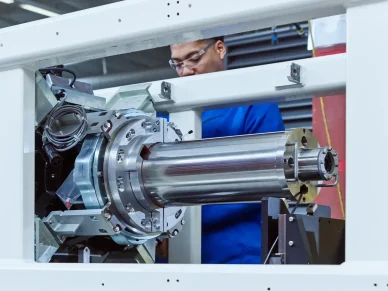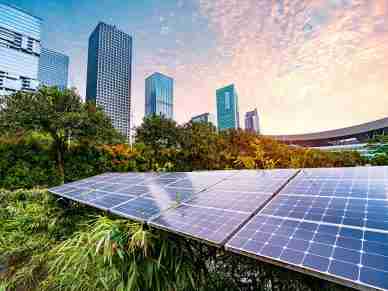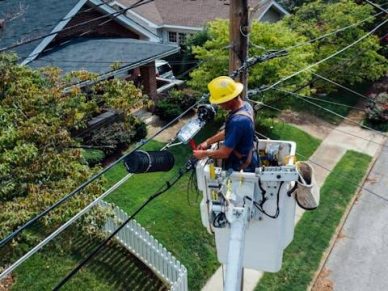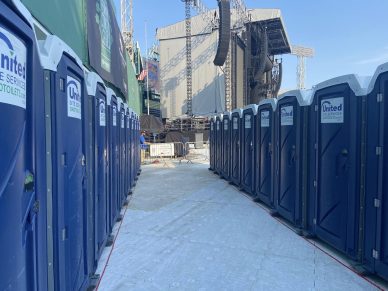Renewable energy prices set to fall dramatically through 2020s

The promise of cheap renewable energy has been a dream for climate scientists and startups alike for well over a decade. As we look at the rest of this decade, it seems those dreams are coming true. Renewable tech has been improving and scaling, to the point that solar and battery costs have fallen 80% in the last decade and wind energy costs are down about 65% in the same time frame. This year, the International Energy Agency reports, will see a record amount of renewable energy capacity added across the world. Prices will continue to fall and capacity to increase. The question is whether it will happen fast enough to mitigate the worst effects of climate change.
The S-Curve

A combination of added capacity, government policies, and the momentum of change will fuel exponential growth in the renewables sector through the 2020s, an RMI (formerly Rocky Mountain Institute) report determined. The price of solar power, already the cheapest energy source in human history, will decrease by 50% by 2030, and wind power costs will go down about 25% in that same time frame, RMI projects.
“Solar, wind, and batteries have been following a typical path for new technology. Learning curves lead to falling prices, lead to rapid growth in new capacity, which leads to change in the generation mix on an S-curve,” the authors state.
Renewables are easily replicable across the globe, they say, which will triple wind and solar generation by 2030 and quadruple it within a generation “to produce more than 14,000 terawatt hours (TWh) and overtake fossil fuel supply.”
With an increase in fossil fuel prices on the back of Russia’s invasion of Ukraine, new wind and solar installations are set to reach 440 gigawatts this year, the IEA says. That’s a third more than in 2022 and will push installed capacity worldwide to 4,500 GW, roughly the total annual output of the U.S. and China combined. More than 60% of energy investment globally is going to renewables.
The era “is an energy technology revolution,” co-author and RMI energy strategist Kingsmill Bond told Clean Technica. “U.S. fossil fuel demand peaked 15 years ago. This is happening. People have just missed it.”
Room for Improvement

Despite all the good in the RMI report, the authors declare that more effort is needed to maximize the potential of renewables.
“But this is a call to action, not a moment to sit back. Around the world, countries, in partnership with the private sector, need to build out grids, change permitting laws, scale up flexibility solutions, improve regulatory and market systems, and speed up deployment in the Global South,” they write.
About two thirds of the growth this year will be in photovoltaic solar installations, both at solar farms and on rooftops. Manufacturing capacity for PV panels is growing rapidly, the IEA says. In contrast, the supply chain for wind turbines is not growing fast enough to meet demand, hindering wind power growth.
IEA executive director Fatih Birol said governments and utilities need to upgrade and expand power grids to allow more capacity for intermittents in the energy mix.
A renewed emphasis on energy security driven by the Russia-Ukraine war and its fallout has incentivized governments to make the changes necessary to improve grids.
“The global energy crisis has shown renewables are critical for making energy supplies not just cleaner but also more secure and affordable,” Birol said. “Governments are responding with efforts to deploy them faster.”
Need to Act Fast

It’s been more than two years since the U.N. Intergovernmental Panel on Climate Change issued the report that was “a code red for humanity” about the need to reduce greenhouse gas emissions quickly to stabilize the climate and limit average temperatures to a 1.5-degree Celsius rise from pre-industrial levels in accordance with Paris agreement goals. We still have a long way to go, and should average global temperatures reach 2 degrees Celsius above pre-industrial levels, agriculture and public health will suffer.
The analysts at RMI are optimistic that renewables can continue to scale and improve at a rapid pace. They point to how much better solar panel and wind turbine technology has gotten in the last decade as the industries scale, in contrast to fossil fuel extraction.
“Exponential growth of clean energy is an unstoppable force that will put more spending power in the pockets of consumers. The benefit of rapid renewable deployment is greater energy security and independence, plus long-term energy price deflation because this is a manufactured technology – the more you install the cheaper it gets,” Bond told Clean Technica.
The IEA report said that projections for renewable capacity additions have been revised up by 40% as a result of Russia’s invasion and subsequent divestment from Russian natural gas by several European countries. In 2024, Germany, Spain, and Ireland will get more than 40% of their electricity from wind and solar power, the IEA projects. At this year’s U.N. Climate Summit, which begins Nov. 30 in Dubai, members are expected to discuss goals for renewable energy rollouts, the Associated Press reports. As renewables continue to get cheaper, we should see more countries join that list.
















Leave a Reply